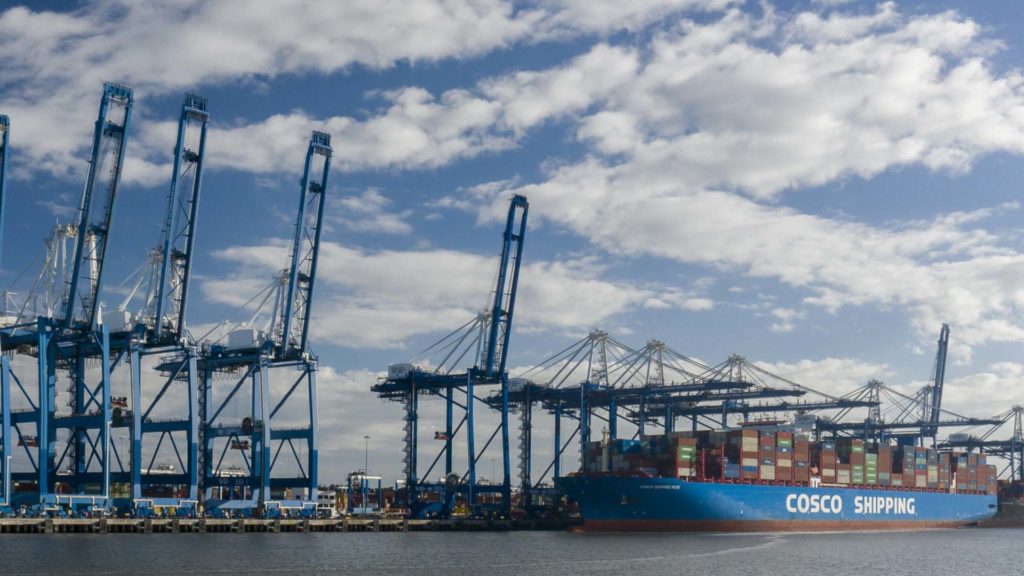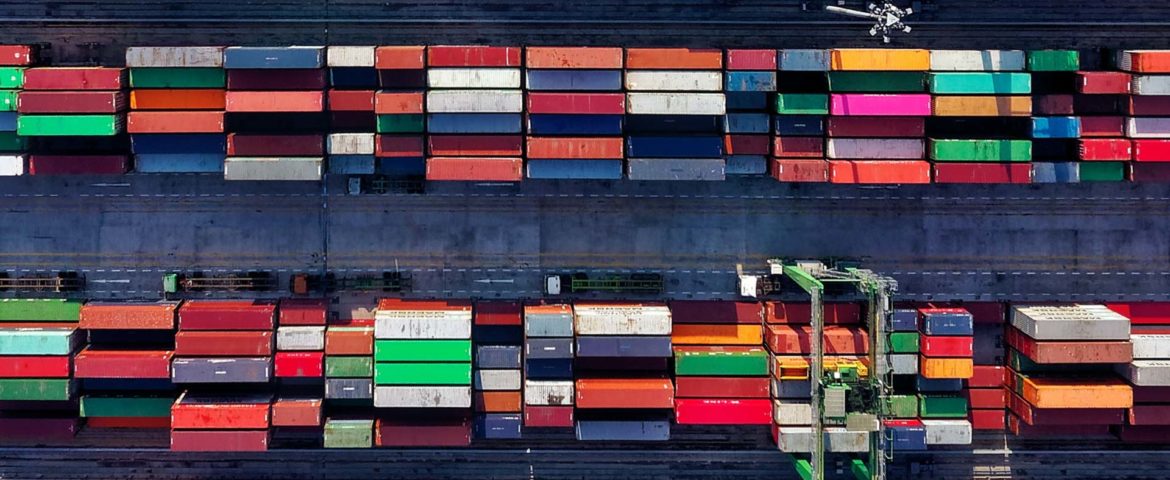As peak season approaches, and many brands are seeking to boost inventory levels in preparation for the holiday shopping season, uncertainty and delays linger over the global shipping network.
Supply chain discussion has hit mainstream news outlets more frequently in the last 18 months with the ongoing pandemic causing mass disruption and yet again over the last several weeks, mainstream media outlets have been reporting on the record-breaking shipping congestion surrounding the nation’s ports.
Reports of over 40 vessels waiting offshore of Los Angeles for access to the Port of Long Beach/LA, in addition to the dozens of both container and breakbulk freighters in wait even in China point to a prolonged backlog that will not be quickly reduced.

Supply chain Imbalance
What started as a cessation of shipping due to the global pandemic, then lead to a vast wave of ships leaving Chinese ports at once and arriving at destination ports in a vast simultaneous block of ships. Port facilities don’t lend themselves well to increasing or decreasing docking/unloading capacity in a short or near-term manner so cargo ships have been forced to wait a turn at the pier to unload.
This is indicative of the entire shipping industry for nearly all consumer products over the last year. The demand for goods and raw materials is extremely high, and the global shipping network has not had a chance to rebalance schedules and vessels.
The seasonality of many goods also plays into this, as nearly every consumer brand drives up inventory level to prepare for the holiday season.
A path to correction
As the year goes on, the timeline seemingly gets pushed back as to when any semblance of normality will return to international supply chains. At this point, experts are varied in their assessments, some estimating the typical lull following the normal holiday rush could provide a window where volumes and shipping assets can rebalance, while others point to continued issues for the next 12 months.
No one knows for certain which is correct, but it’s very likely the heightened rates and disruptions will continue for some time.
Orders have heavily increased for additional shipping containers, class 8 trucks, and cargo ships. With reports suggesting cargo ship orders are double what they were even in 2019. Overtime capacity will be added to the market which will address transportation shortages and likely bring down rates, but consumer demand, as well as the status of the pandemic, will have the largest immediate effect on the further disruptions.
Increasing investment in port infrastructure is another channel to increased global shipping capacity, but this doesn’t happen quickly or at all cheaply.
A sudden drop in consumer demand could quickly reduce needed inventory and allow supply chains a chance to rebalance, but this would be a net negative for nearly everyone as it would spark a more negative economic situation.
Covid-19 outbreaks within port terminals, warehouses, factories, and distribution facilities have a tremendous effect on supply chains, with a single outbreak in a strategic location easily compounding the problem across dozens of companies due to network effects.
Inland Transportation Bottleneck
Drayage, warehouse capacity, chassis availability, domestic trucking and intermodal rail capacity all have an effect on port throughput, once the containers are unloaded via cranes from the ships they then must be transported out of the port to their next stop. The ability for containers to be moved from the port is another factor in the total capacity of a port in a period of time, as without the containers being moved from the container yard there’s simply nowhere to put additional containers. Constrictions like this can quickly arise, even a warehouse being shut down for a few days slows the interconnected flow and creates backups at multiple levels.
Drayage capacity is also drawn thin with rates skyrocketing. Drayage, which is short-haul trucking, typically moving containers to or from rail terminals and ports, has a direct relationship with import volumes. With the current volume levels through ports at record highs, the demand for drayage has also significantly increased resulting in capacity problems and higher prices, thus illustrating the supply and demand aspect of most transportation markets.
A significant percentage of international containers have their cargo transloaded into larger 53ft containers or dry vans in facilities often near the port complex. This reduces transportation costs for firms moving a higher volume of freight on specific routes. A typical example is the ability to transload freight from 5 40 ft containers into 3 53ft containers which have a large impact on freight spend as trucking a 40ft container is not less costly than trucking a 53 ft container. This also gives shippers the ability to mix and match freight between the containers headed for different inland destinations.
Many of these 53 ft loads move via over-the-road trucks in traditional dry vans or via intermodal rail containers which use railroad transportation for the long haul portion of the route.
What are supply chains doing in response?
The tough reality is that there is no easy way to alleviate congestion or many effective ways for individual shippers to simply bypass congestion and capacity issues. Most supply chains are having to deal with the increased transportation costs and delays, calculating them into their financial and inventory management strategy. As we discuss further, this has resulted in the price of many goods being raised to consumers.
Diversification strategies such as working with different suppliers, making arrangements to move imports through different ports are all options. For inland transportation, the use of transloading freight from 40ft to 53 ft containers will be increasingly popular as steamships lines become more strict in the free time allotted to containers.
Automotive Supply Chains
The majority of automakers have been significantly impacted by pandemic-related supply chain disruption. In August of 2021, GMC and Toyota both announced significant factory slowdowns globally, if not outright shutdowns, due to chip shortages, which will delay vehicle inventory improvements for seemingly months. Other manufacturers such as Ford and even Audi have limited the number of tech options you can spec on their vehicles, as often the additional tech packages require additional chips, which simply aren’t available.
It’s hard to say how long all of this will last, there are certainly firms trying to start new chip manufacturing lines, but this takes time and extreme know-how to produce chips at a high level of quality over vast quantities. Firms in China have spent decades refining their chip manufacturing facilities with extensive capital investments, and as a result, a literal majority of the world’s chips are produced there. Producing chips is also environmentally touchy as harsh chemicals are used, which makes starting a new production line somewhere like the US, a tricky issue.
As we’ve included in nearly all our articles this year, supply chain resiliency is a major factor that will become increasingly prioritized in the coming years. While the single supplier relations and just-in-time inventory practices will remain, there will be closer attention paid to developing contingency plans and likely keeping inventory for critical components at higher levels. This does somewhat increase costs, so the calculation and decision must be made whether the components and inventory are worth the extra costs to be better maintain inventory in light of a disruption.
Higher Prices for Consumer Goods
Inflation and supply-side shortages are both to blame for increased prices to consumers. Economists can argue about how long term the issue will remain, but it’s most likely safe to suggest that some items will remain at higher prices as the new normal. Other items such as used cars or even lumber will probably come down in the next 6 months as supply chain abnormalities can be addressed. It’s impossible to predict whether food prices such as meats will remain elevated for a prolonged time or will drop once the supply side issues have been corrected.
Want a free lane and cost savings analysis? – Get in Touch!
Zmodal is a top intermodal shipping company providing door-to-door intermodal, and full truckload services nationwide throughout our digital supply chain dashboard which provides easy route searching, booking, document management, and analytics. CONTACT US if you want to lower your supply chain costs or want access to North American intermodal capacity.



